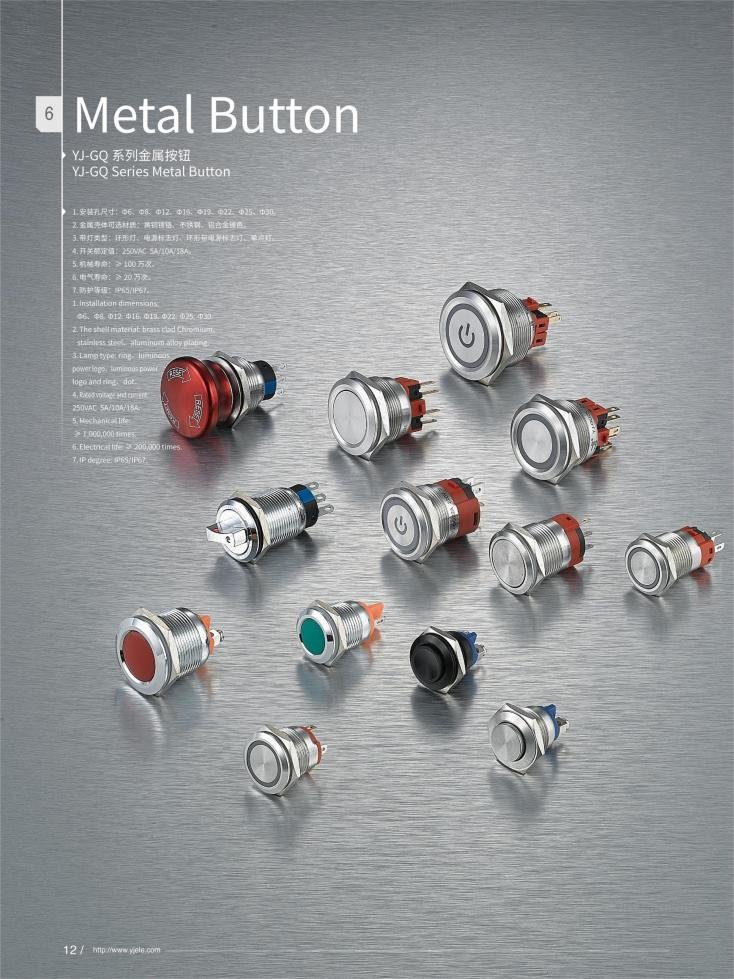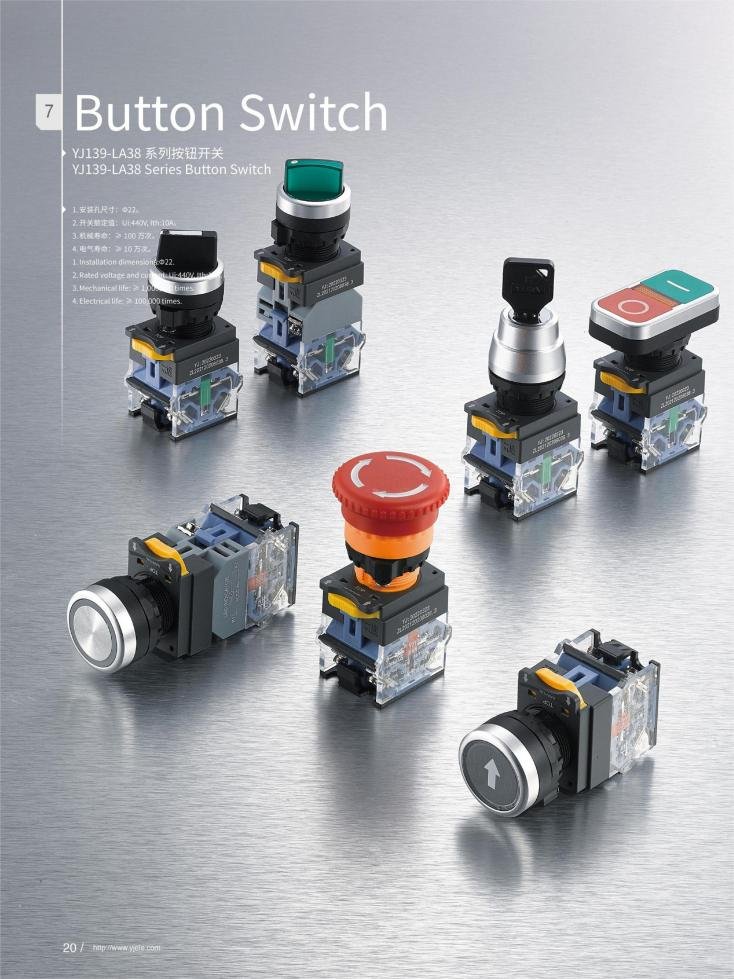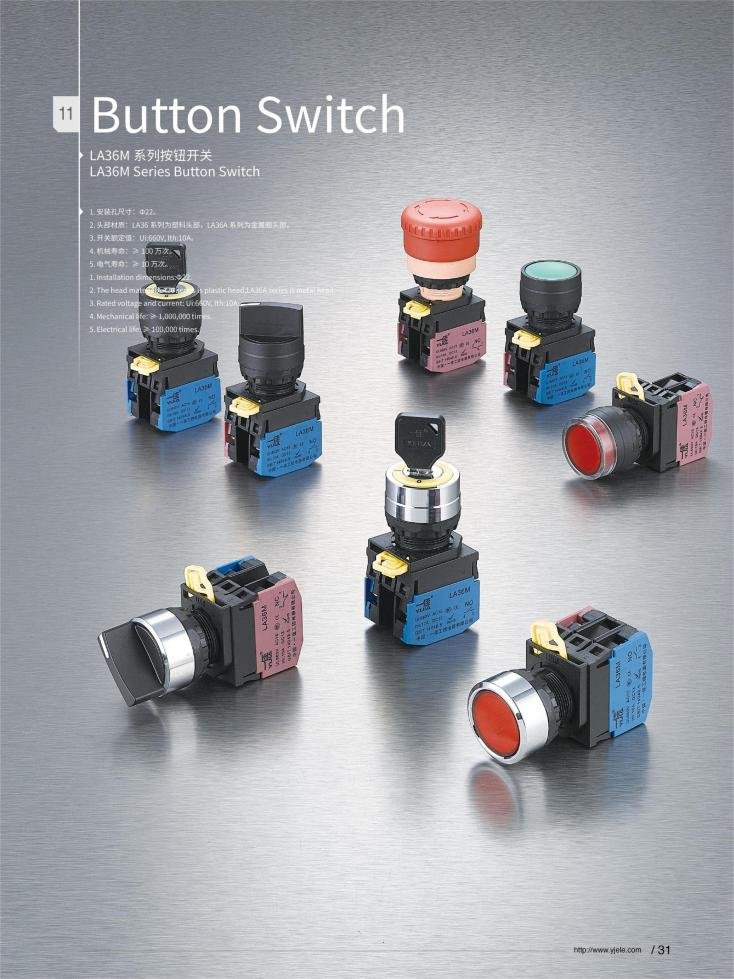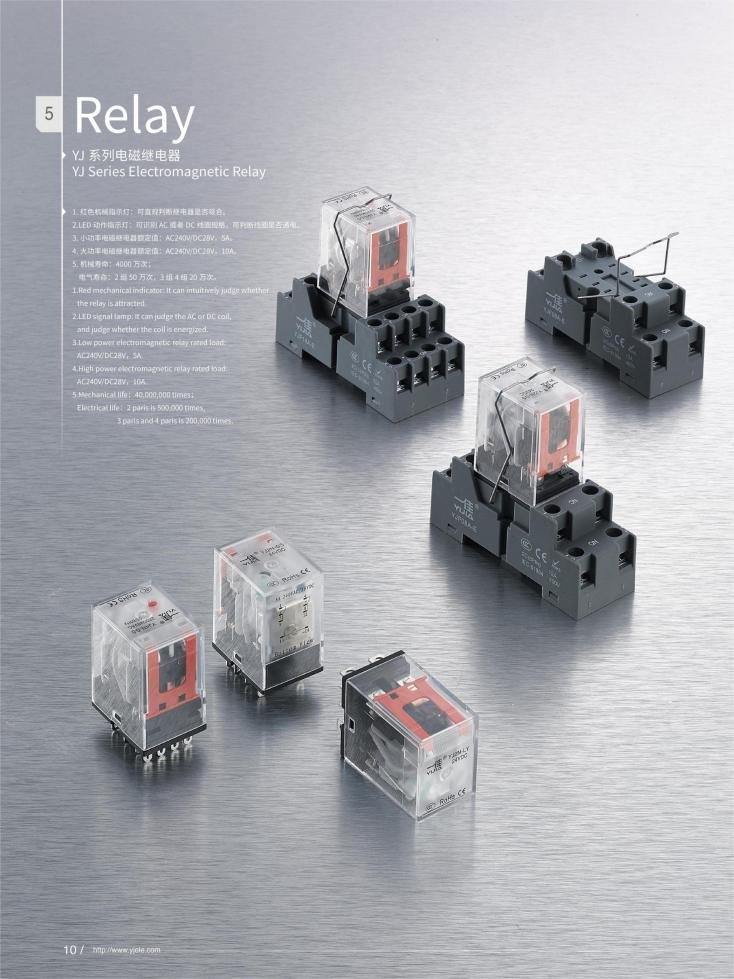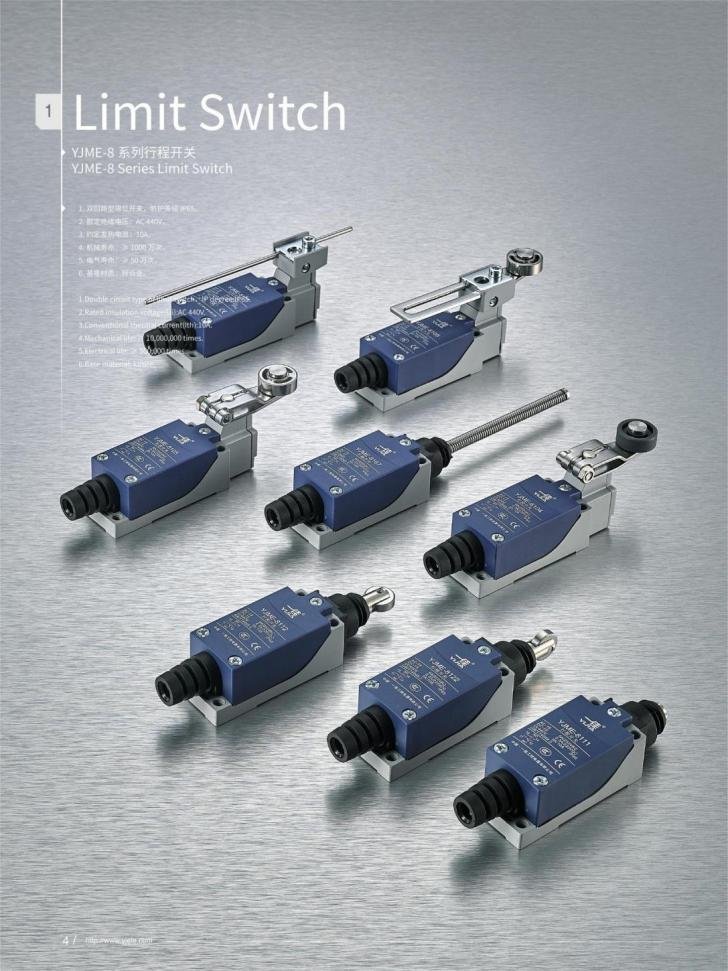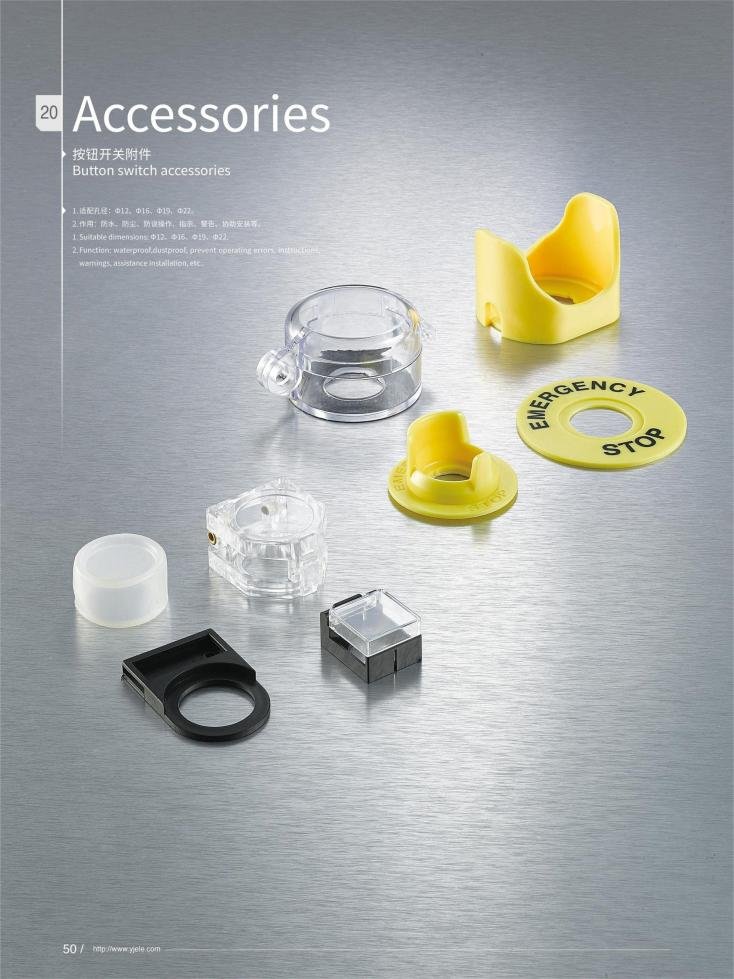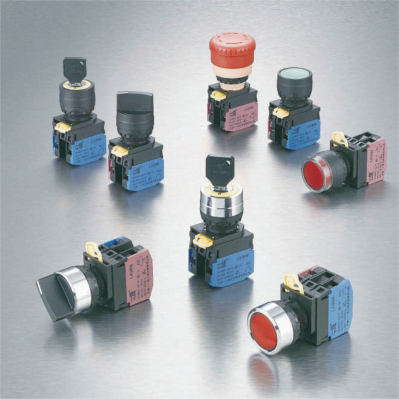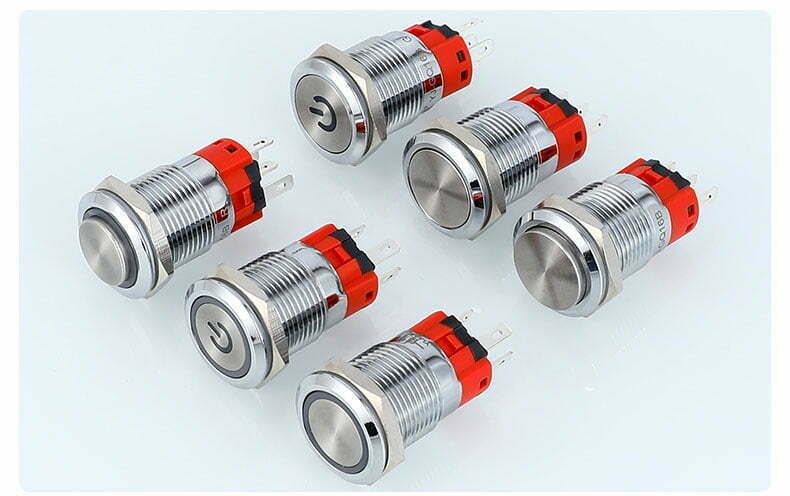Learn more about SPDT push button switches
What is SPDT push button switch
SPDT push button switch, the full name is Single Pole Double Throw (Single Pole Double Throw) push button switch, is a common electrical switch. Its structure allows it to connect an input circuit to either of two different output circuits, often used to control the flow of electrical current.
The core function of this switch lies in its flexible switching ability, which can choose to turn on or off two different lines as needed. SPDT pushbutton switches usually have a push-type mechanism in operation. When the switch is pressed, one line can be selected, and when released, it can connect to another line, or return to the original state.
Due to its structural and functional characteristics, SPDT push button switches are widely used in a variety of equipment and electronic products, such as audio equipment, automotive electronics, household appliances, and industrial control systems, etc., providing a simple and effective way to control complex Circuit design.
Main features
The main features of SPDT push button switches are their flexibility and versatility. Here are some specific features:
- Bidirectional control: SPDT push button switch is able to control two different output lines with only one operating point. This allows the user to switch between different circuit configurations without the need for multiple switches.
- Simple operation: Users can switch lines with a simple press operation, and the operation is intuitive and easy to understand. This simplicity makes SPDT switches particularly suitable for applications that require fast switching of circuit states.
- Compact design: SPDT switches are typically designed to be compact for easy integration on a circuit board or use in space-constrained environments.
- Reliability: This type of switch is designed for long periods of reliable operation and can typically withstand thousands of switching operations without damage.
- Various materials and specifications: SPDT push button switches are available in different materials and specifications, including plastic or metal housings, different sizes and current carrying capabilities to meet different application needs.
- Economic benefits: Compared to other types of multi-way switches, SPDT switches are generally less expensive due to their simple design, making them ideal for cost-sensitive applications.
Components of SPDT push button switches
SPDT push button switches are composed of several key components that work together to achieve their function. The following are the main components that make up the SPDT push button switch:
- Button Cover: This is the part that the user has direct contact with and is used to activate the switch. Button covers are generally designed to be ergonomic, ensuring comfortable use and easy operation.
- Contact: The contact is the key metal component in the switch that is used to complete the closing or opening of the circuit. In an SPDT switch, there are usually three contacts: a common contact and two output contacts. When the button is pressed, the common contact comes into contact with one of the output contacts, completing the switching of the circuit.
- Terminals: The terminals are the part that connects the circuit and are usually located on the bottom of the switch. The SPDT switch has three terminals: one input terminal and two output terminals, corresponding to its three contacts.
- Spring Mechanism: The spring mechanism is responsible for returning the button to its original position. After the button is released, the spring will help the contacts return to their default state, thus ensuring that the switch remains in the preset position before the next operation.
- Enclosure: The enclosure provides mechanical protection from physical damage or environmental effects to internal components. Housings may be made of plastic, metal, or other durable materials, depending on the needs of the application.
- Wiring screw or pin: A component used to secure and connect electrical wires to ensure that electrical current can be safely and reliably transferred from the switch to other parts of the circuit.
Types of SPDT push button switches
The diversity of SPDT pushbutton switches is reflected in their different designs and specific application requirements. The following are SPDT push button switch types classified based on different standards:
Sort by button type
- Standard button: This is the most common type, has a simple push function and is suitable for most basic applications.
- Mushroom head button: This button has a larger head and is shaped like a mushroom, which facilitates quick emergency operation and is often used in emergency stop switches.
- Locking button: This button locks in the open or closed position when pressed and requires special action (such as turning or pressing again) to reset.
Classification by reset mechanism
- Self-resetting button: This button automatically returns to its original position after being released, usually relying on a built-in spring mechanism.
- Manual reset button: This design requires the operator to manually restore the button to its original state, and is often used in situations where operation confirmation is required.
Classified by contact configuration
- Single Throw Single Cut (SPST) Configuration: Although not a SPDT type, for comparison purposes, the SPST pushbutton switch only connects or disconnects a single line.
- Single Pole Double Throw (SPDT) configuration: A standard SPDT switch that can switch between two different output lines.
- Single-pole, three-throw (SPTT) configuration: Less common, can control three different lines, although the design is more complex.
The different types and classifications of SPDT push button switches enable them to be widely used in a variety of different environments and equipment to meet specific functional requirements and operational convenience. Selecting the appropriate type and configuration depends on the specific application needs, including the required control accuracy, ease of operation and safety.
How to choose a suitable SPDT push button switch
When purchasing the right SPDT push button switch, there are several factors to consider to ensure that the switch you choose meets the needs of your specific application. Here are some of the main selection criteria:
Electrical Specifications:
- Current and Voltage Carrying Capabilities: Select a switch based on the maximum current and voltage that will flow through the switch in the application. Make sure the switch is rated higher than the maximum expected load to avoid overloading and potential safety risks.
- Contact material: Choose a contact material suitable for the required current and voltage, such as silver or metal alloy, to ensure good electrical contact and durability.
Mechanical properties:
- Button type: Consider the operating environment and frequency, and select a suitable button type, such as standard button, mushroom head button or lock button.
- Reset mechanism: Choose self-reset or manual reset button according to the required control method. Self-reset is suitable for routine operations, and manual reset is suitable for situations that require operator confirmation.
Environmental adaptability:
- Protection level: Choose the appropriate protection level (such as IP level) according to the dustproof and waterproof requirements of the use environment to ensure that the switch can work reliably under harsh conditions.
- Temperature and chemical resistance: If the switch will be used in high temperature or chemical environments, materials and designs need to be selected that can withstand these conditions.
Installation and maintenance:
- Installation method: Consider how the switch is installed (such as panel mounting, PCB mounting, etc.) to ensure compatibility with other components of the device.
- Maintenance ease: Choose designs that are easy to maintain and replace, especially in high-use applications, to reduce downtime and maintenance costs.
Certifications and Standards:
- Safety certification: Check whether the switch complies with international or regional safety standards, such as UL and CE certification. These certifications mark the safety and reliability of the switch.
Supplier Reputation and Support:
- Choose reputable suppliers: Choose well-known brands or suppliers with good reviews to ensure product quality and after-sales support.
- Technical support: Consider whether the supplier provides technical support and consulting services to help solve problems that may be encountered during installation and operation.

